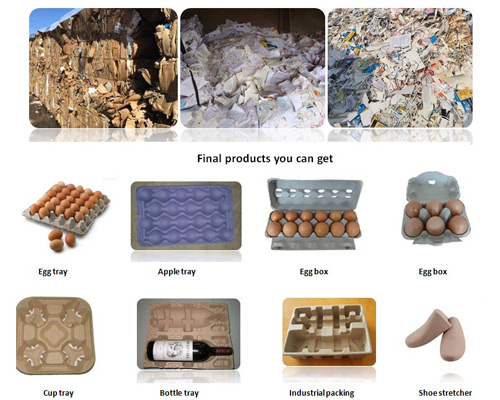The pulp molding machines (Целлюлозно-формовочное оборудование) are devices working on the principle of recycling all types of waste papers ranging from newspapers, old books, magazines, and carton boxes. Companies involved in this business can get products locally or commercially from relevant firms. The machines’ popularity has increased due to its ecologically friendly operations. It has been in existence for a more extended period. Still, the demand has risen drastically in recent years. As more manufacturers focus on environmental consciousness, there has been the invention of variations of this device. It is flexible to produce different end products, including egg trays, apple trays, milk boxes, bottle trays, and stretchers to hold shoes. Its versatility makes it competitive as compared to other devices in the same line of production.

The manufacturing of the commodities, as mentioned above, takes place through four stages. The first step is the pulping stage. Here there is the mixing of water and the waste paper in measured proportions. The aim is to form a consistent mixture. Other minor equipment working to execute this function involves a pulp beater and a pool of water. In case of any impurities, they get removed to ensure the end product is safe to use by consumers. The mixture then gets conveyed through pipes to the second part of the production, the molding stage. The different molding equipment forms the kind of trays required as per the client’s instructions. The pipes will splash the mixture to make them land on the molds. With help from a vacuum pump, excess water gets removed, while the materials attach fully to the equipment. Removal of air makes it efficient for them to take the exact shape for quality production. Upon formations, the air compressor blows air to let them detach before transportation for drying, which is the third stage. More information here! https://bestongroup.ru/tsellyulozno-formovochnoye-oborudovaniye/
Before proceeding, a cleaning device splashes water to clear any wastes on the equipment to prepare for the next batch. This stage employs different types of drying systems depending on the capacity of production. The commonly used types include a metal drying line or a brick line. They get powered by diesel or gas. They have conveyors to move around the products for uniform distribution of heat. The other system is natural drying. It typically takes place under the sun. It is cheap but can result in inconveniences when the weather is unfavorable. Such concerns only make it ideal for small scale production. The last phase involves packing. The pulp molding machine makes use of a hot press to make the trays uniform. Also, it allows for the stacking of a large number in one storage box.
The operations of a pulp molding machine are economical but yield a large turnover of profits. It recycles waster paper and water released at the second stage. You can get it in three modifications, fully automatic, semi-automatic, and manual models. All of them work on a related mechanism but have unique features. The production capacity and rate are also distinctive, making them suitable in diverse scenarios.